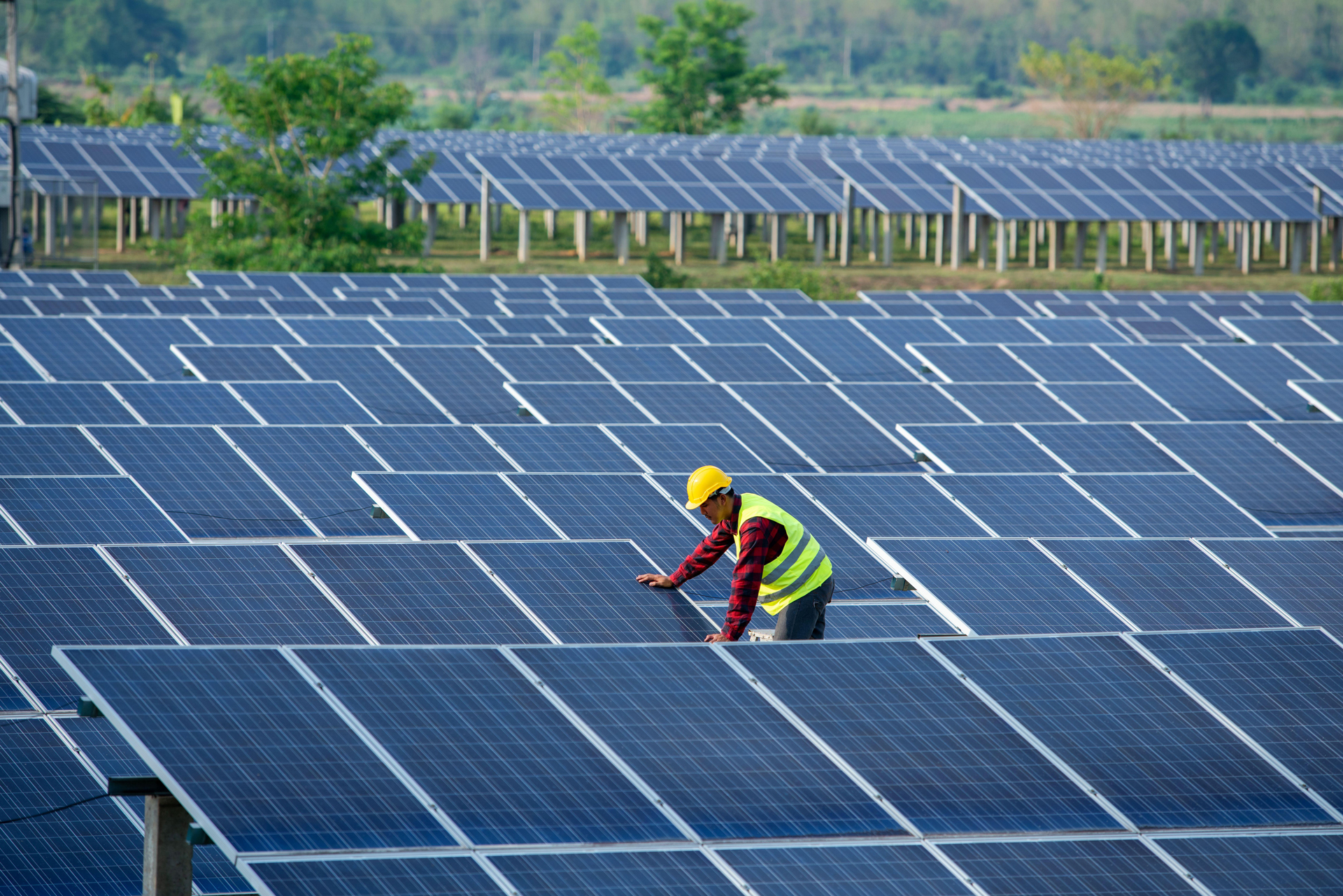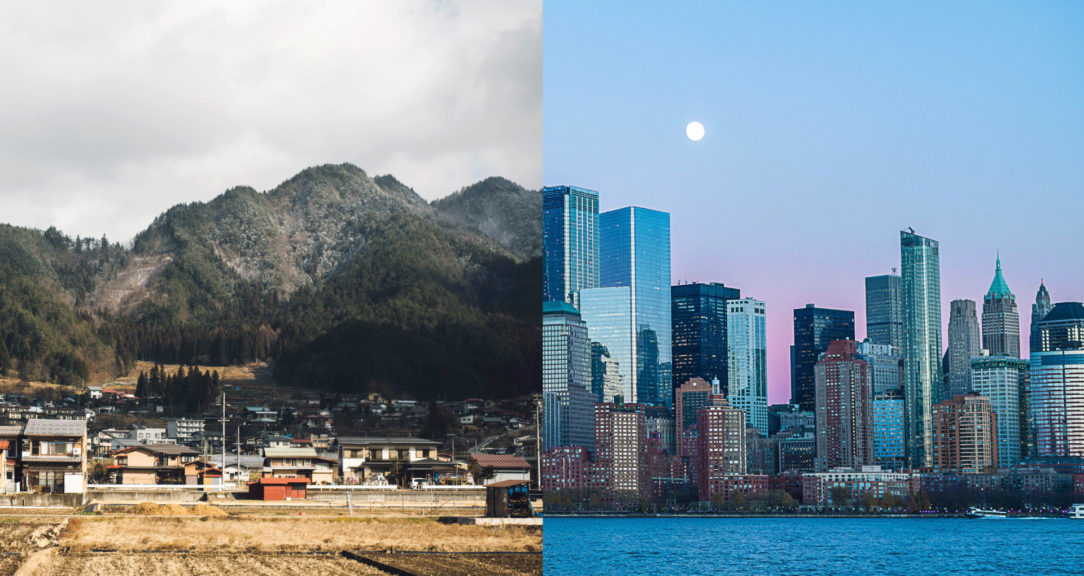Countries around the world are racing to reduce carbon emissions in an attempt to limit global warming to 1.5 degrees Celsius above pre-industrial levels. Climate change has already led to extreme weather events such as storms and fires, exacerbated food and water scarcity, and fueled conflicts — a situation the U.N. warns will only get worse unless major changes are made.
In response, about 145 countries have agreed to or are considering adopting targets to reach net-zero emissions by 2050. Others have passed legislation allocating hundreds of billions of dollars to fight climate change.
Global investment in the energy transition hit a record $1.8 trillion last year, led by strong growth in China, the U.S. and Europe, BloombergNEF found. The figure includes spending on electric vehicles, wind power, biofuels productions and geothermal plants, as well as power grid investments that will enable the switch.
But achieving a low-emission global economy will depend as much on people as on technology. As environmental commitments create millions of new jobs over the next decade, targeted and tailored retraining is needed to build a global workforce ready to drive the transition and confront the climate crisis.
A global talent shortage
Green jobs are broadly defined as any role that focuses on sustainability and environmentally friendly activities. These include workers in classic fields such as conservation and ecosystem restoration, renewable energy, sustainable design and sustainable investing. But many green workers are also employed in less obvious roles.
Sustainability-minded fleet managers, data scientists, healthcare workers, construction managers and technical sales reps are all crucial to lowering global carbon emissions. Waste management, construction, architecture and planning, agriculture, ranching and forestry have some of the highest concentrations of green jobs, according to the talent platform LinkedIn.
Demand is already outpacing supply, according to an annual report from LinkedIn: Green jobs now make up one-third of all postings on LinkedIn. Last year, job postings requiring at least one green skill grew by 15%, but only 12.5% of workers have any green skills, the study found.
This change comes as workforces in many high-income countries are aging. “There’s a generation that’s going to retire in the next five to 10 years, and that generation is the backbone of the culture and the expertise in many organizations,” says Simone Piana, ADP’s VP of Talent Acquisition. “The knowledge they have isn’t necessarily easy to transmit to others, and, particularly in payroll, there are not enough new hires.” In many places, there’s a mismatch between what educational programs focus on and what skills companies actually need, Piana notes.
Change doesn’t happen easily, but the new opportunity is almost endless.
Simone Piana, VP of Talent Acquisition, ADP
In the U.S., just 1.4% of mechanics are certified to service electric vehicles, even as EV sales grew by 50% last year, the Financial Times reported in January. Many EVs are now a decade old and will require more maintenance in the years ahead. In the U.K., tens of thousands of households are on waitlists for technicians who can install residential heat pumps, smart meters and solar panels, the paper reported.
Billions of dollars of green investments are also driving job growth in Asia, Africa and South America, according to the World Economic Forum. But without enough skilled talent, these industries can’t grow.
Easing the transition
Every industry is considering how new technology will affect the workforce. In a 2023 case study that looked at how 35,000 Canadian oil and gas workers could be retrained to enter the solar photovoltaic industry, researchers at the Michigan Technical University and Canada’s Western University developed a framework for what a green talent transition might look like.
Analyzing national occupational data, the researchers classified oil and gas workers by job category, region and educational level, and then compared the information to the solar industry. They then reassigned workers to the closest positions in the solar industry based on their existing skills sets and calculated how many workers would need retraining — and how much it was cost.
The results were promising: Thousands of workers already held construction, installation and support roles that would allow them to transition directly to photovoltaic installation and support jobs. Transitioning the entire workforce would cost between 91.5 million and 276.2 million Canadian dollars ($67 million to $202 million), just 2% to 6% of annual oil and gas subsidies, and workers would have a new, sustainable career with roughly equivalent pay. The costs were “far from prohibitive,” making a rapid transition to sustainable energy production feasible, the researchers concluded. A similar skills assessment and reassignment analysis could be used to efficiently retrain talent in other sustainable industries as well.
The green economy is also coming as generative AI is also reshaping the world of work. As technology is able to handle more and more tasks that previously required human intervention, some jobs will be phased out while others are created. This requires thoughtful change management.
“Change doesn’t happen easily — humans are reluctant to change,” Piana says. But “The new opportunity is almost endless. As we integrate new tools in our daily operations, we see the quality is growing, and the quality of the experience as a worker improves. Our time can be allocated to activities and operations that deserve our talent rather than to tasks that can be allocated to tech tools.”
Public-private collaboration
Regardless of the exact framework used, public and private leaders — as well as workers themselves — will all need to pull together to ensure a smooth transition.
“We definitely need to increase the pace of interaction between the public and private sectors and consider social responsibility to highlight what’s needed in creating jobs,” ADP’s Piana says.
Organizations need to understand how their workforce looks today and how it will look five years from now to identify gaps and see where technology can help augment the workforce.
“Some expertise is just not available today, so you need to build it internally,” Piana says. That includes new graduates, people who have unrelated experience but are willing to learn, people who have been out of the workforce on parental leave, and people who are returning to the workforce part-time.
Workers must be willing to adapt and embrace new opportunities. But if forced to foot the bill for retraining themselves, many workers won’t have the resources or incentives to drive the transition, according to a study by the London School of Economics. Low-carbon jobs often require higher technical skills but aren’t necessarily better paid, and changing governmental priorities can create job uncertainty, the researchers discovered.
Government and industry must therefore work together to ensure enough training programs exist and to fund the training — and to financially support workers during the retraining period. For example, in 2018, Spain decided to shut down its coal mines and invest $280 million in the affected regions, including retraining programs. In the U.S., the 2022 Inflation Reduction Act earmarked $1 billion to help companies replace polluting vehicles with zero-emissions fleets, including grants for training workers to maintain them.
Good policies, including green R&D and infrastructure investments, can also promote growth in low-emissions fields and naturally draw workers to higher-paying green jobs, according to the IMF. Carbon taxes for polluting businesses combined with worker tax credits — and even direct cash payments in developing countries with large informal economies — can also ensure sustainable businesses thrive while still protecting workers during the transition.
Read more
Sign up to keep up to date with ReThink Q.








